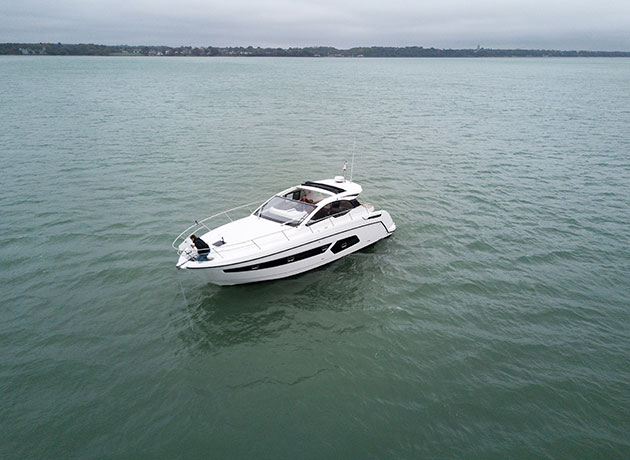Berthing in the wind can be a nerve-wracking proposition but our latest How To video shows you the best techniques to make windy berthing a breeze
Berthing on a windy day can be one of boating’s most stressful tasks, particularly if the wind is attempting to blow your boat away from your intended berth. Earlier in this series we covered how to balance your boat against the elements in order to hold it steady.
Now try combining this with deliberately driving the boat to windward to assist with the berthing manoeuvre. When it’s windy, unless the boat is balanced bow or stern to the elements, you will only have a small window to work with before the wind puts you in a boat-damaging situation.
On the day we shot this article, we had a steady 18-20 knots of breeze across our intended berth with gusts of up to 25 knots. To demonstrate how you can use the boat’s weight and momentum to counteract the wind and buy you the time to execute the manoeuvre before the wind starts to push the bow around, we deliberately used the bow thruster only when absolutely essential. Article continues below…

VIDEO: How to – Head to windward
In our latest boat handling video, Jon Mendez shows how best to trim the boat when you head to windward

VIDEO: How to – Pick up a mooring buoy
In this episode we guide you through the best techniques for picking up a mooring buoy
Of course, in real life you should use it when you feel the need but bear in mind that electric bow thrusters only have limited power and run time, so try not to rely on it too much. The objective is to use the wind as a decelerator of the boat’s movement towards the berth rather than accelerating it away from it.
To do this effectively, you need a start position that allows you to approach your intended berth from a downwind position. This may mean going past your intended berth and turning the boat round to give you the required approach.
In a dead-end aisle, this will require some positive boat handling to ensure you don’t get swept downwind and into further danger. The way to do this is to drive past the berth, bring it to a complete stop by balancing the stern against the wind, then start to reverse the boat upwind towards your intended berth before beginning any turn.
The technique will work on most boats but we used a twin outdrive boat which had plenty off windage, a very light bow and a modest bow thruster to ensure it was suitably challenging. Twin shafts usually offer better grip on the water and tend to be fitted to heavier craft so should prove easier to manoeuvre.
Pod drives and/or joystick controls will make the process easier but still require the same planning and approach as they tend to have a slower reaction time. Bow and stern thrusters (when fitted) can save a lot of stress but relying on them without considering where you will we end up if the wind overwhelms them is a risky strategy.
As with all berthing manoeuvres, make sure you’ve fendered the boat appropriately. That means fenders on both sides at the correct heights so that if you do get it wrong, all you need to do is stop the boat moving fore or aft; most fenders will cope with drifting sideways into something but if you compound the problem by trying to power against them, you’re much more likely to cause damage.






















